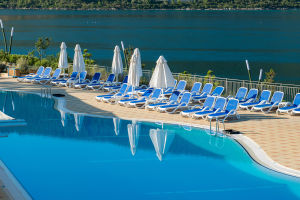Red beds are sedimentary rocks typically consisting of conglomerate, sandy conglomerate, sandstone, siltstone, shale and mudstone that are predominantly red in color due to the presence of ferric oxides. They are magical sights created by nature and bring us the enjoyment of beauty .
Owing to differences in depositional environments and influences of late stage geologic processes, the color of red beds can be brownish-reddish-yellow, brownish-yellow, purplish-red, brownish-red, grayish-purple and other reddish tints.
In a typical tropical and subtropical continental environment, red beds are the product of multiple sedimentary cycles, which have resulted in complicated rock mass structures that play an important role in rock mass stability.
The term red beds usually refers to strata of reddish-colored sedimentary rocks such as sandstone, siltstone or shale that were deposited in hot climates under oxidizing conditions.They are usually formed in terrestrial situations: on land, and in rivers and lakes.
The red color comes from iron oxide in their mineral structure. Although they have been deposited throughout the Phanerozoic, they are most commonly associated with rocks deposited during the Devonian, Permian and Triassic periods. The Old Red Sandstone is one of the most famous rock formations.
Red beds have economic significance since many of them contain reservoirs of petroleum and natural gas.
Secondary red beds are linked to the uplift, erosion and surface weathering of previously deposited sediments and require conditions similar to primary red beds for their formation.
The formation of red beds has been much discussed. The basic chemical change which produces them is oxidation. At first it was thought they indicated desert conditions. Some do, and this can be proved if the strata show signs of dune formations.
However,in modern times red beds are often found in low-latitude tropical climates, and they are always associated with oxidising conditions... the redbeds may be associated with rain forests or places where the rainfall is high but confined to monsoonal periods.A good model for red bed-producing conditions today is the Amazon basin.
As a representative of red beds distributed in the western United States, Zion National Park is characterized by a geomorphic combination of plateau and canyons in arid climate. In terms of general geologic structure, Zion is a fault block formed on the western margin of the Colorado Plateau.
There are few folds and faults, but joints are exceptionally well developed in Zion, they are responsible for the orientation of canyon network. The dominant rock strata exposed in Zion belong to red beds, which were mainly deposited in the Jurassic with a wide range of environments, including near shore/shallow sea, streams, lakes, and deserts.
In terms of lithological features, most red beds in Zion are fine-grained sandstones and siltstones. Among them, the spectacular cliffs in Zion are made of eolian quartz sandstones.
However, due to cement differences of each rock member, there are remarkable diversities in rock strength and colors.


